Abstract
Backgrounds/Aims
Surveillance programs and imaging modality developments have increased the detection rate of small hepatocellular carcinoma (HCC). In particular, liver transplantation produces good results and is now regarded an alternative to liver resection. However, optimal treatment for small HCC is still debated, and thus, the authors designed this study to document clinicopathological characteristics, to identify the prognostic factors of small HCC, and to determine the effectiveness of surgery.
Methods
A total of 507 patients underwent curative liver resection for HCC between January 1996 and August 2006 in our institution. One hundred and thirty four of these patients with a single HCC of less than 3 cm and no gross vascular invasion were enrolled.
Results
Major resection was performed in 32 (23.9%) patients; there was no postoperative mortality. Fifty-eight (43.3%) patients experienced recurrence, 53 developed intrahepatic recurrence alone, and 50 (94.3%) of 53 had tumors within the Milan criteria. Five-year disease-free and overall survival rates were 51.0% and 77.3%, respectively. Microscopic vascular invasion, positivity for hepatitis B surface antigen or antibody to hepatitis C, and an indocyanine green retention test at 15 minutes of more than 10% were found to be significantly correlated with disease-free overall survival. A platelet count of less than 100,000/mm3 was the only independent prognostic factors of overall survival identified.
Go to : 
The majority of hepatocellular carcinomas (HCC) arise in the background of chronic hepatitis and cirrhosis, and thus, liver transplantation is the most ideal treatment modality as it corrects the underling liver disease. However, because of the donor shortage situation, liver resection is the preferred treatment. Furthermore, the use of liver resection in patients with HCC is largely limited by advanced disease and poor liver function.
Recently, a randomized controlled study was performed to determine the merits of HCC screening in China.1 It was found screening confers survival benefits and that development of imaging modalities and surveillance programs have increased the detection rate of small resectable HCC.23 Several studies have reported the outcomes of treatment modalities for small HCC,45678 and despite the different definitions used for small HCC, liver transplantation has been proposed as an alternative strategy for small HCC instead of liver resection.89 Nevertheless, the optimal treatment for small HCC remains controversial. 1011 Small HCC has a favorable prognosis, but its outcome was different according to the prognostic stratification and prognostic scoring system for patients treated by liver resection.612
In the present study, we investigated the clinicopathological characteristics and prognostic factors of small HCC and attempted to determine the effectiveness of surgery with the intention of finding the best approach for its treatment.
Go to : 
Curative resection was defined as complete tumor resection with a clear microscopic margin and no residual tumor by imaging at 1 month after surgery. Major liver resection was defined as the resection of ≥3 Couinaud segments. Postoperative mortality was defined as death within 1 month after surgery, and recurrence as typical arterial enhancement with delayed washout on computed tomography (CT) images. Causes of patient death were classified as recurred HCC-related death, complications of liver cirrhosis without recurrence, and unrelated causes.
Five hundred and seven patients underwent curative liver resection for HCC between January 1996 and August 2006 at the Department of Surgery, Yonsei University Health System, Seoul, Korea. Of these 507 patients, 146 had single HCC of ≤3 cm in diameter. Twelve of the 146 patients were also excluded because of gross portal or hepatic vein involvement. Finally, 134 patients were enrolled in this study.
A preoperative CT scan, biochemistry testing, and an indocyanine green retention test at 15 minutes (ICG R15) were performed on all patients. The decision whether to perform major or minor resection was made preoperatively based on tumor location by CT, liver function, Child-Pugh status, ICG R15, and on the likelihood of achieving an adequate resection margin. Alpha-fetoprotein (AFP) levels were determined and underwent ultrasonography (US) or CT performed on all patients every 3-6 months after surgery.
Prognostic factors for disease-free survival and overall survival were sought from among the following 18 clinicopathologic variables. Nine were patient factors, namely, age, gender, etiology of liver disease, serum albumin level, serum aspartate aminotransferase (AST) and alanine aminotransferase (ALT) levels, ICG R15, platelet count, and liver cirrhosis grade. Five were surgical factors, that is, intraoperative bleeding amount, perioperative transfusion, surgical tumor-free resection margin, extent of resection, and type of resection, and four were tumor factors, that is, tumor size, microscopic vascular invasion, Edmondson-Steiner grade, and serum AFP level.
Statistical analysis was performed using SPSS v 12.0 software (SPSS Inc., Chicago, IL, USA). Continuous results are presented as medians (ranges) and categorical results are presented as numbers (percentages).
Disease-free and overall survival rates were calculated using the Kaplan-Meier method. Prognostic factors of disease-free and overall survival rates were indentified using the log-rank test and univariate analysis. Multivariate analysis was performed using the Cox proportional hazard model; factors significant by univariate analysis were included. Statistical significance was accepted for p-values of <0.05.
Go to : 
The clinical characteristics are presented in Table 1. The 134 study subjects had a median age of 53.1 years (range, 24-73 years), and 99 were male. The most common etiology of liver disease was hepatitis B virus (n=104, 77.6%). Liver cirrhosis was proved by pathologic examination in 86 patients (64.2%). All patients except one were of Child-Pugh class A. Major resections were performed in 32 patients (23.8%). Forty-five patients (48.9%) received a perioperative transfusion, and there was no postoperative mortality.
During a median follow-up of 43.5 months (4-110 months), 58 (43.3%) patients recurred. Fifty-three patients developed intrahepatic recurrence alone, 4 extrahepatic recurrences alone, and 1 concurrent intrahepatic and extrahepatic recurrence. Fifty (86.2%) of the intrahepatic recurrence patients had tumors within the Milan criteria, and 17 patients (12.7%) expired due to recurrence (Table 2). The 1-year, 3-year, and 5-year disease-free and overall survival rates were 82.0%, 62.4%, and 51.0%, and 97.0%, 89.5%, and 77.3%, respectively (Fig. 1).
Microscopic vascular invasion (Hazard ratio [HR]= 1.738; 95% confidence interval [CI], 1.015-2.977; p= 0.044), positivity for hepatitis B surface antigen or antibody to hepatitis C (HR=3.490; 95% CI, 1.258-9.682; p=0.016), and an ICG R15 of >10% (HR=1.737; 95% CI, 1.019-2.960; p=0.042) were found to be significantly and negatively correlated with disease-free survival by both univariate and multivariate analyses (Table 3,4,5). A serum albumin of <3.5 g/dl, a serum platelet count of <100,000/mm3 and non-anatomic resection were found to be significantly associated with overall survival by univariate analysis (Table 3, 4). However, only a platelet count of <100,000/mm3 (HR=2.907; 95% CI, 1.341-6.299; p=0.007) was found to be independently associated with prognosis by multivariate analysis (Table 5).
Go to : 
Mazzaferro et al.13 first reported good results for liver transplantation in selected patients, and several studies conducted since have concluded that liver transplantation is the better treatment option.914151617 Accordingly, liver transplantation is now viewed as the treatment of choice for early HCC in Child-Pugh class B or C cirrhosis. However, liver resection has also produced good results in patients with small HCC; in fact, the 5-year overall survival rate in the present study was 77.3%. These results show, although the disease-free survival rate for liver resection is poorer than of liver transplantation, that the overall survival rates of liver resection and liver transplantation are similar for patients with small HCC, and suggest that liver resection is a good treatment option in patients with small HCC.1819
The merits and demerits of major versus minor resection and anatomical resection versus non-anatomical resection are still debated for small HCC. In the present study, 102 (76.1%) patients underwent minor resection, including non-anatomical resection (n=20, 14.9%), and operation type was not found to be associated with disease-free or overall survival. In a previous report, we reported that non-anatomical resection for small HCC had no adverse effect on disease-free survival,20 and other authors have reported similarly.2122 In fact, these authors also concluded that minor and non-anatomical resection of small HCC (except for deep-seated HCCs or HCCs located alongside a major vessel) is an effective treatment option.
Prognosis after HCC resection has been shown to be affected by tumor invasiveness and underlying liver function.232425 According to our results, the long-term prognosis of patients with a single small HCC is more associated with underlying liver function than invasiveness. Microscopic vascular invasion and positivity for hepatitis B surface antigen may develop intrahepatic metastasis and de novo carcinogenesis, respectively, after resection, but in the present study, the majority of recurrences (n=53, 91.4%) were confined to the remaining liver. In addition, 50 patients developed nodular recurrence, which was well controlled by multimodality treatments and had a better prognosis than other recurrence patterns. These observations suggest that long-term prognosis is associated with liver function and the extent to which the liver can resist recurrence given aggressive treatment.
However, according to our data, overall survival rate at 5 years after resection decreased, indicating that liver transplantation was eventually required because of the progression of underlying liver disease or HCC recurrence. Salvage liver transplantation provides an alternative in patients with recurrence after liver resection. However, the initial experiences with salvage liver transplantation were relatively poor, in which operative mortality was high (23.5%) and survival was unfavorable, but many of the of patients had a tumor beyond the Milan criteria.26 It has been reported that salvage liver transplantation is feasible in 75-80% of patients after liver resection,27 and in the present study, salvage liver transplantation was found to be feasible in 50 of 53 patients (94.3%). It was recently reported that salvage liver transplantation can be performed with acceptable morbidity and mortality rates and produce results comparable to those of primary liver transplantation.2829 Furthermore, in one these previous studies, patients that underwent liver resection or liver transplantation showed similar survival rates by intention-to-treat analysis.29 However, salvage rates of only up to 20% have been reported by others.293031 Thus, further studies are needed before salvage liver transplantation can be generally adopted.
Liver resection has been adopted as the primary treatment modality for small HCC because its overall survival rate is comparable to that of liver transplantation. Moreover, because salvage liver transplantation produces attractive results, liver resection, including minor and non-anatomical resection, can be chosen as a primary treatment option for patients with small HCC, even for those with risk factors of a poor prognosis.
Go to : 
References
1. Zhang BH, Yang BH, Tang ZY. Randomized controlled trial of screening for hepatocellular carcinoma. J Cancer Res Clin Oncol. 2004; 130:417–422. PMID: 15042359.

2. Bruix J, Sherman M. Practice Guidelines Committee, American Association for the Study of Liver Diseases. Management of hepatocellular carcinoma. Hepatology. 2005; 42:1208–1236. PMID: 16250051.

3. El-Serag HB, Marrero JA, Rudolph L, Reddy KR. Diagnosis and treatment of hepatocellular carcinoma. Gastroenterology. 2008; 134:1752–1763. PMID: 18471552.

4. Yamamoto J, Okada S, Shimada K, et al. Treatment strategy for small hepatocellular carcinoma: comparison of long-term results after percutaneous ethanol injection therapy and surgical resection. Hepatology. 2001; 34:707–713. PMID: 11584366.

5. Jarnagin WR. Management of small hepatocellular carcinoma: a review of transplantation, resection, and ablation. Ann Surg Oncol. 2010; 17:1226–1233. PMID: 20405327.

6. Nathan H, Schulick RD, Choti MA, Pawlik TM. Predictors of survival after resection of early hepatocellular carcinoma. Ann Surg. 2009; 249:799–805. PMID: 19387322.

7. Farinati F, Sergio A, Baldan A, et al. Early and very early hepatocellular carcinoma: when and how much do staging and choice of treatment really matter? A multi-center study. BMC Cancer. 2009; 9:33. PMID: 19171074.

8. Chen MS, Li JQ, Zheng Y, et al. A prospective randomized trial comparing percutaneous local ablative therapy and partial hepatectomy for small hepatocellular carcinoma. Ann Surg. 2006; 243:321–328. PMID: 16495695.

9. Baccarani U, Isola M, Adani GL, et al. Superiority of transplantation versus resection for the treatment of small hepatocellular carcinoma. Transpl Int. 2008; 21:247–254. PMID: 18028264.

10. Arii S, Yamaoka Y, Futagawa S, et al. The Liver Cancer Study Group of Japan. Results of surgical and nonsurgical treatment for small-sized hepatocellular carcinomas: a retrospective and nationwide survey in Japan. Hepatology. 2000; 32:1224–1229. PMID: 11093728.

11. Llovet JM, Bruix J, Gores GJ. Surgical resection versus transplantation for early hepatocellular carcinoma: clues for the best strategy. Hepatology. 2000; 31:1019–1021. PMID: 10733561.

12. Minagawa M, Ikai I, Matsuyama Y, Yamaoka Y, Makuuchi M. Staging of hepatocellular carcinoma: assessment of the Japanese TNM and AJCC/UICC TNM systems in a cohort of 13,772 patients in Japan. Ann Surg. 2007; 245:909–922. PMID: 17522517.
13. Mazzaferro V, Regalia E, Doci R, et al. Liver transplantation for the treatment of small hepatocellular carcinomas in patients with cirrhosis. N Engl J Med. 1996; 334:693–699. PMID: 8594428.

14. Figueras J, Ibañez L, Ramos E, et al. Selection criteria for liver transplantation in early-stage hepatocellular carcinoma with cirrhosis: results of a multicenter study. Liver Transpl. 2001; 7:877–883. PMID: 11679986.

15. Hemming AW, Cattral MS, Reed AI, Van Der Werf WJ, Greig PD, Howard RJ. Liver transplantation for hepatocellular carcinoma. Ann Surg. 2001; 233:652–659. PMID: 11323504.

16. Jonas S, Herrmann M, Rayes N, et al. Survival after liver transplantation for hepatocellular carcinoma in cirrhosis according to the underlying liver disease. Transplant Proc. 2001; 33:3444–3445. PMID: 11750474.

17. Tamura S, Kato T, Berho M, et al. Impact of histological grade of hepatocellular carcinoma on the outcome of liver transplantation. Arch Surg. 2001; 136:25–30. PMID: 11146770.

18. Margarit C, Escartín A, Castells L, Vargas V, Allende E, Bilbao I. Resection for hepatocellular carcinoma is a good option in Child-Turcotte-Pugh class a patients with cirrhosis who are eligible for liver transplantation. Liver Transpl. 2005; 11:1242–1251. PMID: 16184539.

19. Zhou J, Wang Z, Qiu SJ, et al. Surgical treatment for early hepatocellular carcinoma: comparison of resection and liver transplantation. J Cancer Res Clin Oncol. 2010; 136:1453–1460. PMID: 20148264.

20. Kang CM, Choi GH, Kim DH, et al. Revisiting the role of nonanatomic resection of small (< or = 4 cm) and single hepatocellular carcinoma in patients with well-preserved liver function. J Surg Res. 2010; 160:81–89. PMID: 19577249.
21. Chen J, Huang K, Wu J, et al. Survival after anatomic resection versus nonanatomic resection for hepatocellular carcinoma: a meta-analysis. Dig Dis Sci. 2011; 56:1626–1633. PMID: 21082347.

22. Dahiya D, Wu TJ, Lee CF, Chan KM, Lee WC, Chen MF. Minor versus major hepatic resection for small hepatocellular carcinoma (HCC) in cirrhotic patients: a 20-year experience. Surgery. 2010; 147:676–685. PMID: 20004441.

23. Chen JY, Chau GY, Lui WY, Tsay SH, King KL, Wu CW. Clinicopathologic features and factors related to survival of patients with small hepatocellular carcinoma after hepatic resection. World J Surg. 2003; 27:294–298. PMID: 12607054.

24. Shimozawa N, Hanazaki K. Longterm prognosis after hepatic resection for small hepatocellular carcinoma. J Am Coll Surg. 2004; 198:356–365. PMID: 14992736.
25. Kim SH, Choi SB, Lee JG, et al. Prognostic factors and 10-year survival in patients with hepatocellular carcinoma after curative hepatectomy. J Gastrointest Surg. 2011; 15:598–607. PMID: 21336497.

26. Adam R, Azoulay D. Is primary resection and salvage transplantation for hepatocellular carcinoma a reasonable strategy? Ann Surg. 2005; 241:671–672. PMID: 15798471.

27. Cunningham SC, Tsai S, Marques HP, et al. Management of early hepatocellular carcinoma in patients with well-compensated cirrhosis. Ann Surg Oncol. 2009; 16:1820–1831. PMID: 19267161.

28. Belghiti J, Cortes A, Abdalla EK, et al. Resection prior to liver transplantation for hepatocellular carcinoma. Ann Surg. 2003; 238:885–892. PMID: 14631225.

29. Del Gaudio M, Ercolani G, Ravaioli M, et al. Liver transplantation for recurrent hepatocellular carcinoma on cirrhosis after liver resection: University of Bologna experience. Am J Transplant. 2008; 8:1177–1185. PMID: 18444925.

30. Poon RT, Fan ST, Lo CM, Liu CL, Wong J. Long-term survival and pattern of recurrence after resection of small hepatocellular carcinoma in patients with preserved liver function: implications for a strategy of salvage transplantation. Ann Surg. 2002; 235:373–382. PMID: 11882759.
31. Facciuto ME, Koneru B, Rocca JP, et al. Surgical treatment of hepatocellular carcinoma beyond Milan criteria. Results of liver resection, salvage transplantation, and primary liver transplantation. Ann Surg Oncol. 2008; 15:1383–1391. PMID: 18320284.

Go to : 




 PDF
PDF ePub
ePub Citation
Citation Print
Print


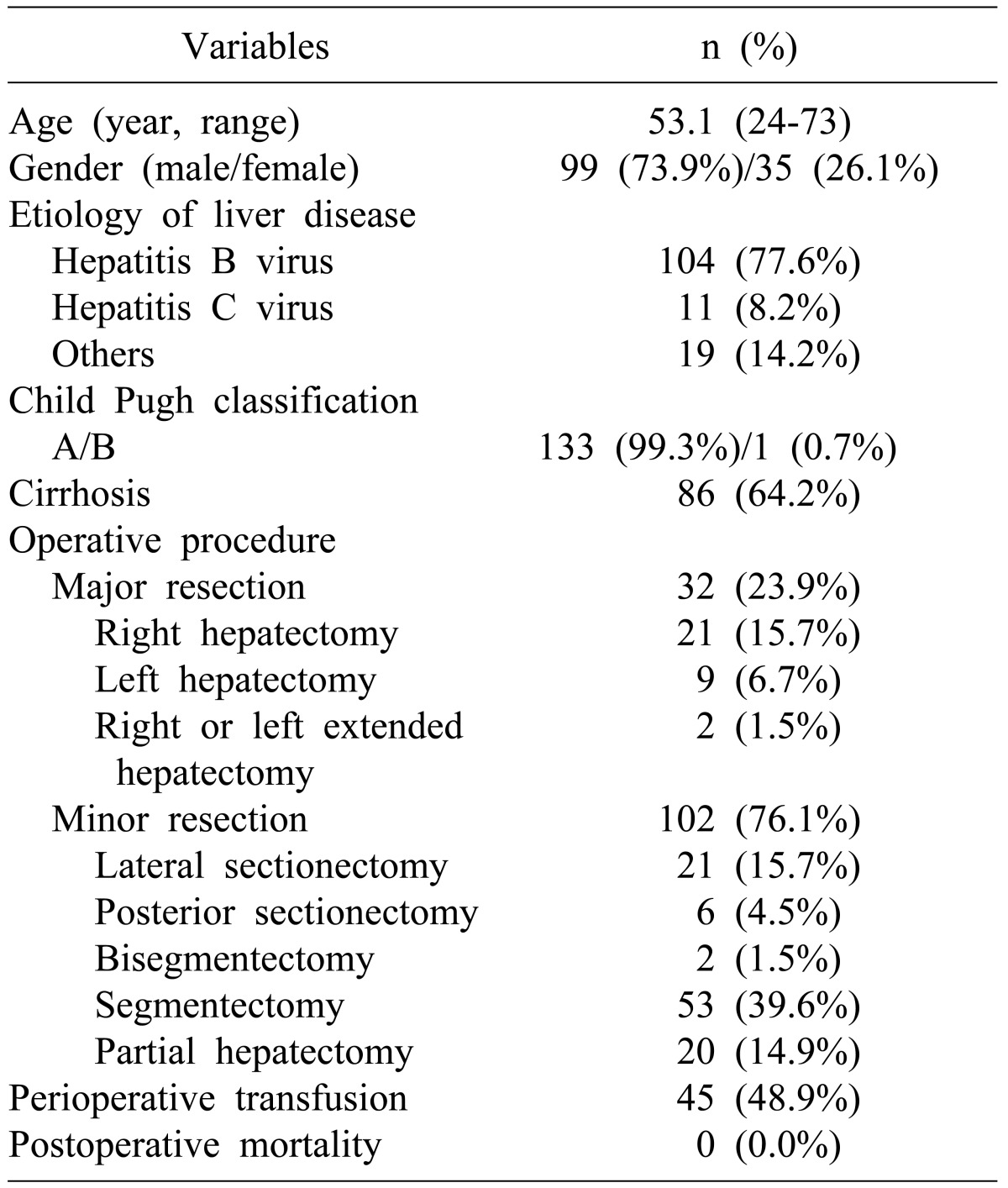
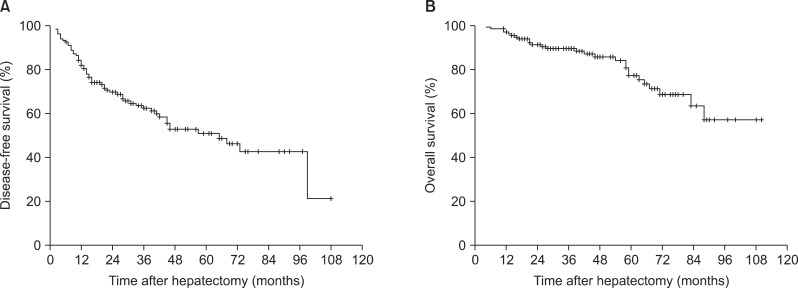
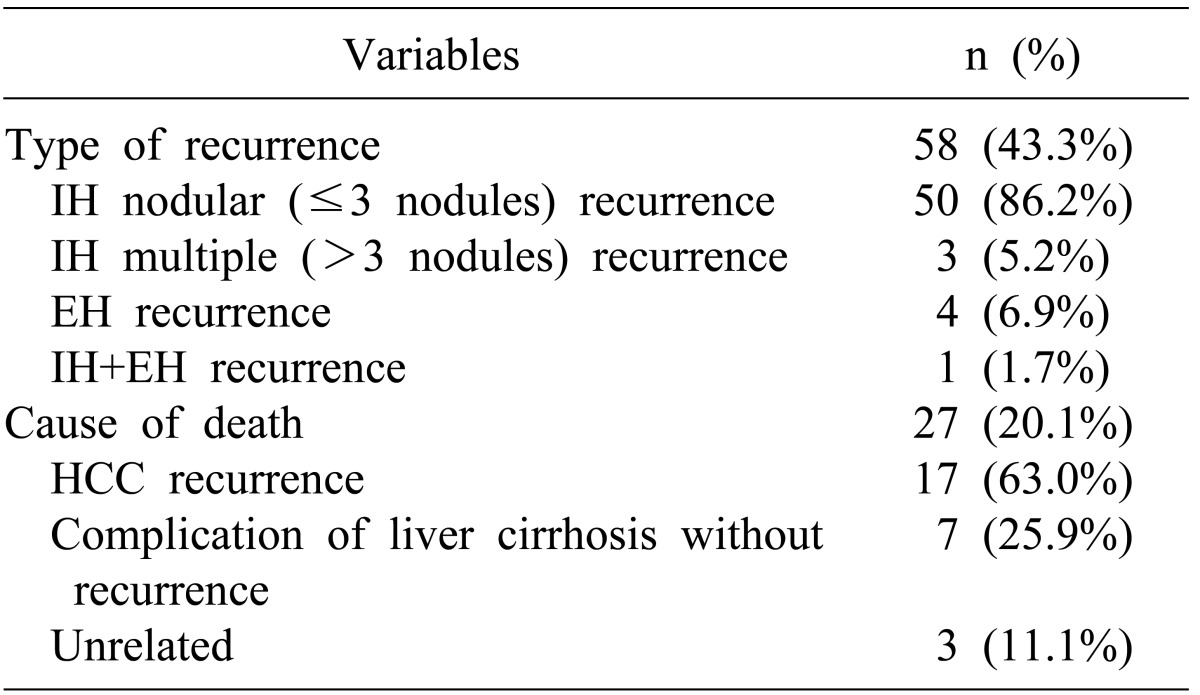
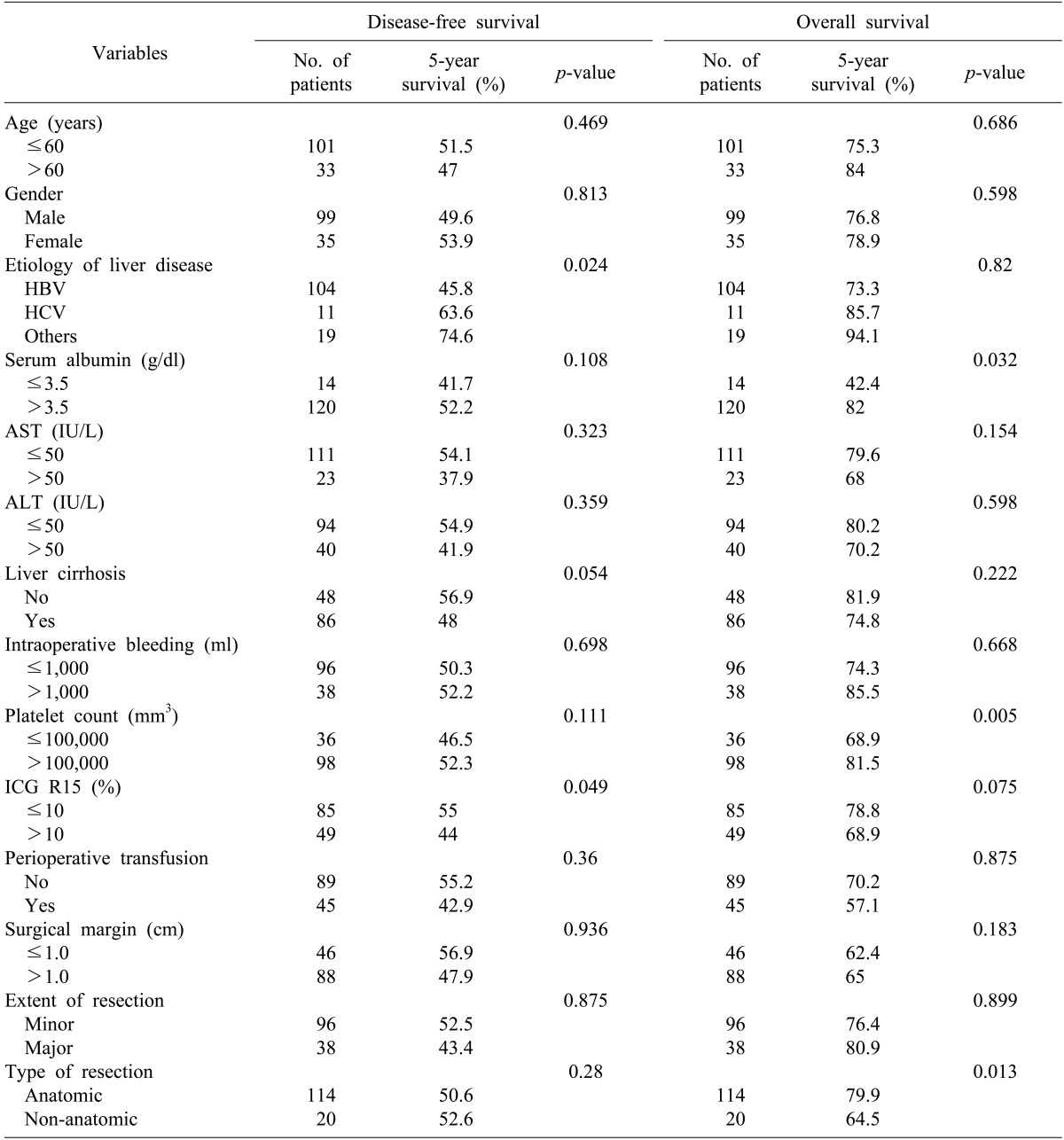
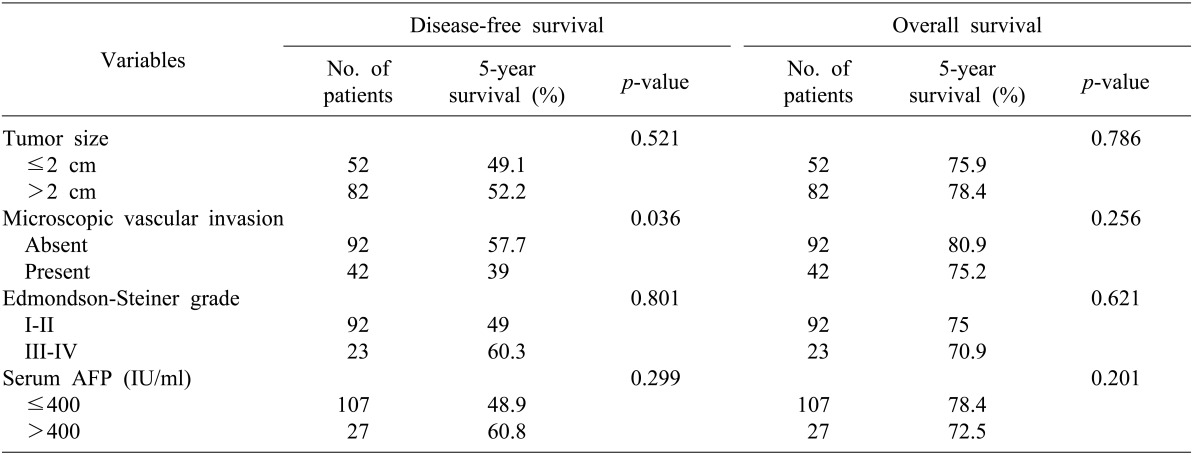

 XML Download
XML Download